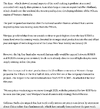- Joined
- 15 June 2023
- Posts
- 1,742
- Reactions
- 3,915
The African govts love the Chinese but we all know how it ends up with Chinese investment, the donor country ends up in more than just debt to China because they can't pay the money back. The govt corruption is the thing that's hard to get rid of in Africa and this is the cause of all the rising coups against current govts. It's a very politically unstable country and the other threat to mining is the rebel groups.Africa and China != Africa and western countries
At present, you will not see an African government taking a Chinese mining company management group hostage the time to ramp up a new tax.
This mine will work, IMHO the only issue is potential western interest sabotages in the context of a China cold war we are heading in.






